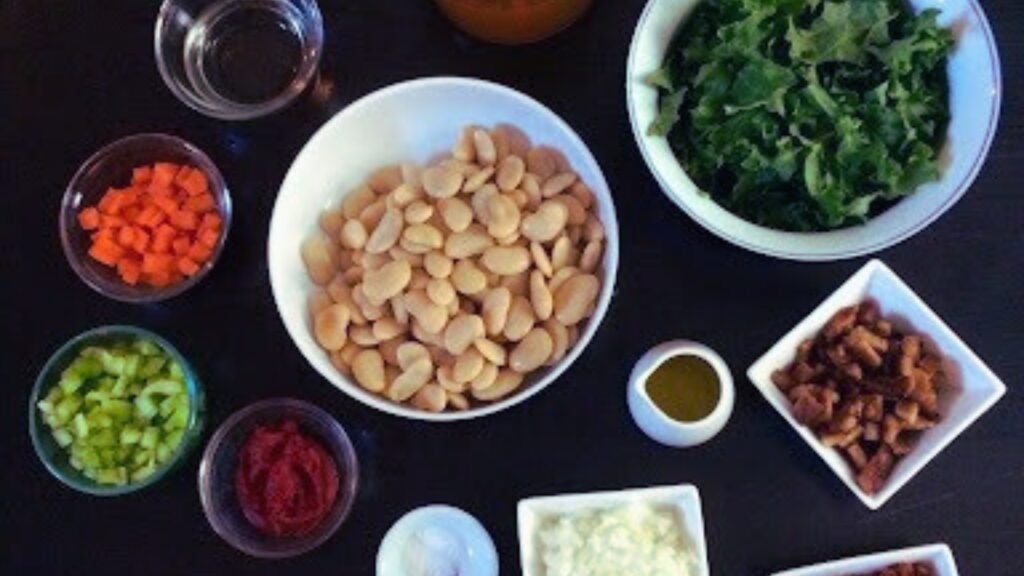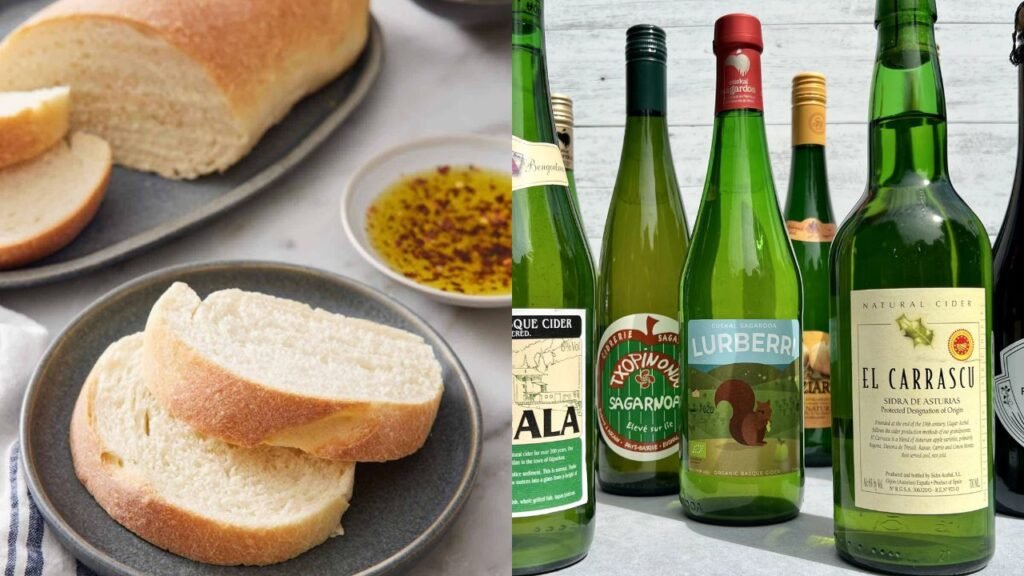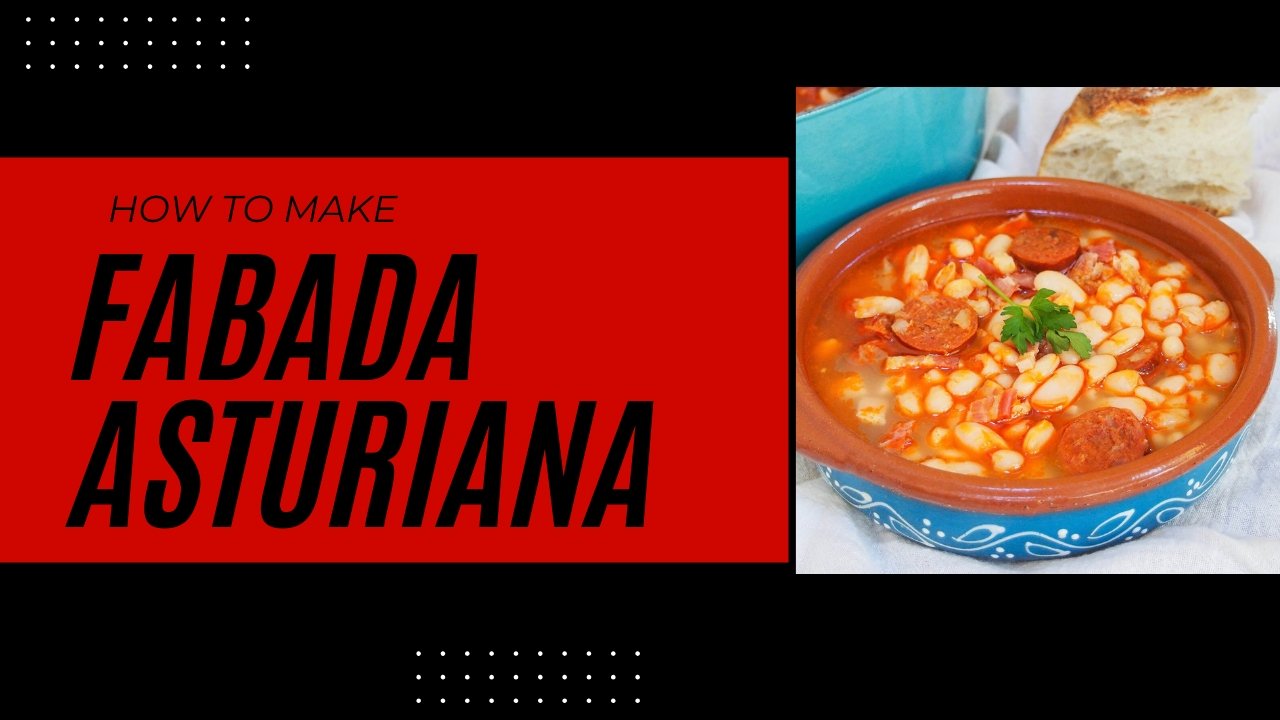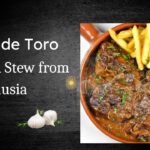Fabada Asturiana is more than just a food. It is a dish that has passed through generations and is enjoyed at the family table. It is rich in taste, Hearty, and traditional. It is also healthy and oil-fashioned Spanish Cooking. A comforting dish that is served everywhere. When you think about comforting dishes, Paella or tapas count well. But Fabada Asturiana has its taste. So you should learn how to make Fabada Asturiana. A green part of northern Spain is called Fabada Asturiana.
In this blog post, you will learn how to make Fabada Asturiana with a quick and easy style in 2025. Let’s get started!
Table of Contents
What Is Fabada Asturiana?
Fabada Asturiana is a rich and hearty bean soup. A Spanish comfort food, Its deep cultural roots make it so special. And served in the family gatherings, festivals, and Sunday lunches. It is a tradition on a plate. The flavor of Fabada Asturiana is rich, smoky, and meaty. It gets its depth from high-quality Spanish meats like chorizo, morcilla (blood sausage), and pancetta, or cured pork belly with large white beans. The result is a soup that’s comforting, filling, and packed with bold Spanish flavor. But in 2025, this classic Spanish stew is making a big comeback. On a cold day, There is deliciousness in every bite!
Origin of Fabada Asturiana
This dish has humble, peasant origins. Rural Asturians create it. It was filled with meat and existed before, the key ingredient that truly defines Fabada— the large, white beans. This is the ideal food for farmers and laborers. These beans are introduced in the Asturian climate and staple crops in the region. Over time, it became a regional favorite.
In this, you will know how to discover a truly authentic Fabada Asturiana. There are some modern tips to help you recreate it at home, whether you’re in Madrid, New York, or anywhere in between.
Ingredients You’ll Need in 2025
To make an authentic Fabada Asturiana, you need just a few key ingredients:
But they must be high quality. The magic of this dish lies in its simplicity and the flavor that develops from slow-cooking traditional Spanish meats and beans together.
- Fabes de la Granja (Asturian beans): It is large, creamy white beans. It helps to hold their shape. It is said to be the heart of Fabada.
- Chorizo: Spanish pork sausage seasoned with paprika. It adds smokiness and a deep, red color to the broth.
- Morcilla Asturiana: A special type of Spanish blood sausage. It has a soft, rich texture and a distinctive earthy flavor.
- Pancetta: Salted pork belly or bacon, which brings richness and fat that enhances the stew’s depth.

Modern Substitutions
Can’t find fables or traditional Asturian meats? No problem — you can still enjoy a delicious fabada with these alternatives:
- Use large butter beans or cannellini beans.
- Replace Spanish chorizo with smoked sausage or linguiça.
- For morcilla, try black pudding or another mild-blood sausage.
These substitutions won’t perfectly match the original, but they’ll still give you a hearty, flavorful result.
Where to Buy Authentic Ingredients in 2025
Thanks to growing global interest in Spanish cuisine, it’s easier than ever in 2025 to find authentic ingredients online:
- La Tienda (US-based Spanish store with international shipping)
- Despana (New York-based Spanish deli with online orders)
- IberGour or Gourmet en Casa TCM (European sites for cured meats and specialty items)
- Local Spanish or Latin grocery stores often carry chorizo and similar beans.
Step-by-Step Recipe for Fabada Asturiana
Making a true Fabada Asturiana takes time, but it’s well worth the wait. Follow these simple steps to bring the taste of Asturias into your kitchen.
1. Soak the Beans Overnight
Start by soaking 500g of fabes or white beans in plenty of cold water. Let them sit overnight (8–12 hours). This softens the beans and shortens the cooking time.
2. Prepare the Meats
Gather your traditional meats:
- 2 Spanish chorizos
- 2 pieces of morcilla
- 150g of pancetta or bacon
- Rinse them gently if they’re too salty. You can leave them whole or cut them in half for easier serving later.
3. Slow-Cook the Fabada
Drain the beans and place the soaked and rinsed beans in a large pot. Add about 2-3 cm cold water to cover or soak the beans. Add the chorizo, morcilla, pancetta, and a splash of olive oil.
Gently simmer without stirring. Stirring too much can break the bean skin. Simmer on low heat for 2 to 3 hours, partially covered. Add water as required in the beans.
4. Skim and Season
As the fabada cooks, fat, impurities, and foam will rise to the surface. Use a spoon to skim off any foam toward the end, and season with salt to taste, but only after the meats have released their flavors.
Avoid stirring continuously; it can break the beans. Gently shake the pot instead.
5. Let It Rest Before Serving
You have to remove the pot when the beans are creamy and the meats are tender, remove the pot from heat. It’s a complete meal in itself. Let the fabada rest for 30 minutes to an hour, covered. This helps the flavors settle and deepen.
Fabada Asturiana Variations in 2025
Popular variations are given below:
1. Vegetarian or Lighter Versions
Many brands now offer plant-based chorizo or spicy vegan sausages that give a good flavor and texture. Modern fabadas use white beans with smoked paprika, olive oil, and vegetable broth. Ingredients like mushrooms, sun-dried tomatoes, or vegan chorizo add depth without sacrificing flavor.
2. One-Pot or Instant Pot Method
Busy home cooks love the Instant Pot version. It cuts down cooking time drastically under a pressure cooker from hours to under an hour. Add large soaked beans, meats (or meat substitutes), and broth, and let the pressure cooker do the rest.
3. Fabada with Local Beans Around the World
It is a slow-cooked stew of large white beans and various pork products. Fabada with local beans has variations around the world. The essence of the dish is found in the cream, tender beans, or pork flavors. It is the satisfying or warmth of a smokiness.
By using the core elements, you can adapt ingredients available wherever in the world.
What to Serve with Fabada
The beauty lies in the simplicity and richness. Fabada is known as the star of the show. It is always served hot in deep and hearty bowls.

Crusty Bread:
A good crusty, thick slice of rustic bread is essential. Use them to soak up the rich broth—don’t be shy about it.
Asturian Cider (Sidra):
This is the most traditional drink pairing. This gives a sour, fizzy cider taste.
Red Wine:
If cider isn’t available, a young Spanish red wine like Mencía or Rioja Crianza pairs beautifully with the smoky, meaty flavors.
Traditional Asturian Meal Flow
In Asturias, Fabada is usually part of a multi-course long Sunday lunch:
- Starter: Light soup, salad, or local cheese.
- Main Course: A generous bowl of Fabada Asturiana.
- Dessert: Something sweet and straightforward.
- Coffee or Digestif: Serve with an espresso, or you can use a small shot of orujo.
Tapas or Full Meal?
Fabada is traditionally a main dish, not a tapa, but a modern version is given as:
- Tapas Style: Serve a small portion in a bowl with a spoon alongside other tapas. Tapas are designed for sharing.
- Meal: Serve it hot in a clay bowl (cazuela) as the centerpiece. A traditional appetizer- the main dessert flow can feel more elegant.
Sizzling garlic, juicy shrimp, and Spanish olive oil — Gambas al Ajillo is pure flavor in just 15 minutes.
Tips for Perfect Fabada
There are so many tips for the rich, flavourful Fabes, and some are given as:
Quality Ingredients
Use authentic fabes de la Granja, large white beans specifically grown in Asturias. If you can’t find them, use large beans like cannellini or Great Northern beans.
Don’t Stir—Swirl Instead
Avoid breaking the beans by stirring too much. Swirl the pot from time to time to mix the flavors.
Low and Slow = Deep Flavor
Always try to soak the dried Fabada in cold water for at least 8-12 hours or overnight. Fabada is a soup that benefits from slow cooking. High heat can cause beans to break. Simmer the Fabada on low heat for several hours. This will allow the chorizo, morcilla, and pork to release their smoky richness and give the beans time to absorb every layer of flavor, or this process enhances the flavor.
Let It Rest Before Eating
Rest the Fabada for at least 15 minutes. It will be even better to make it in advance. The flavor melted, making it more delicious.
Conclusion
Fabada Asturiana is a combination of superior ingredients. It is more than just a recipe; it is a part of culture and tradition. It is ideally an overnight secret and an unforgettable dish. Smoky Meats and beans give the most satisfying and comforting flavor. This dish shares the love.
In 2025, when we’re all craving for more authentic, home-cooked experiences.
Make it on a family dinner or a weekend get-together. Whether you make it for a cozy family dinner or a weekend get-together, it’s a powerful reminder that simple ingredients, cooked with care, can become something unforgettable. Must try this dish and don’t forget to give me reviews.
Cook, taste, and share a piece of Asturias!










